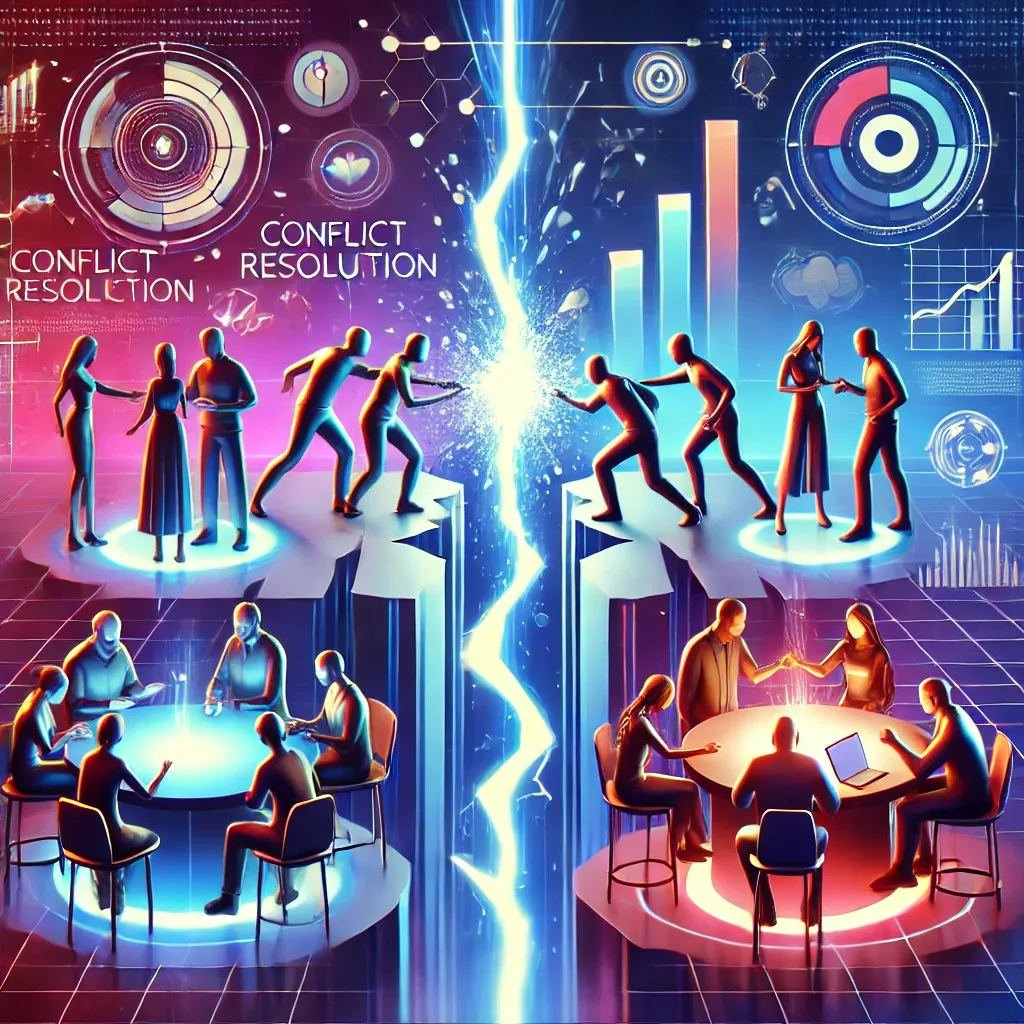Conflict Resolution in Team Collaboration: When Code Isn’t the Only Thing Breaking
If you’re reading this, you’ve probably been in a meeting where someone’s “constructive feedback” was just thinly veiled frustration. Welcome to the world of conflict resolution, where soft skills are just as crucial as code commits.

The joys of teamwork. You know, that mythical state where everyone is on the same page, moving forward harmoniously—like a well-oiled machine? Yeah, right. If you’re reading this, you’ve probably been in a meeting where someone’s “constructive feedback” was just thinly veiled frustration, and instead of building bridges, you all ended up setting them on fire. Welcome to the world of conflict resolution, where soft skills are just as crucial as code commits.
The Root of All Software Development Drama
Conflict in team collaboration often sneaks in the door in the form of clashing egos, unclear requirements, or, dare I say it, someone’s precious, untested feature request. No one wants to say it, but the real root cause is people. Sure, your test suite is thorough, but how about the tests on your interpersonal skills? When developers are passionate—ahem, stubborn—about their work, even something trivial, like tabs vs. spaces, can escalate faster than a memory leak.
Identifying the Types of Conflict
Not all conflicts are created equal. Sometimes it’s just a misunderstanding about priorities, sometimes it’s personal (looking at you, Carl, who keeps merging without a code review). Here are the main types you’ll encounter:
-
Task Conflict: “Why are we wasting two sprints on this feature that no one will use?” Legitimate differences about what should be done. Can be healthy if handled with maturity (emphasis on if).
-
Process Conflict: “We should be using Scrum.” “No, we should be Kanban-ing our way out of this mess!” Disagreements about how work gets done, which can be pretty gnarly if people are unwilling to budge.
-
Relationship Conflict: The most awkward of them all. Personal slights, bruised egos, or “your tone in the stand-up was pretty condescending, bro.” Hard to resolve and leaves the team dynamics feeling like spaghetti code.
Conflict Resolution Techniques That (Actually) Work
We’re not aiming for world peace here, just some functional level of cooperation. Here’s how to get there without anyone rage-quitting:
- Listen Like You Actually Care
Yes, I know you’re halfway through debugging, but when someone comes to you with a concern, give them your attention. Listening doesn’t mean waiting for your turn to talk. Let them feel heard. Sometimes, just acknowledging someone else’s frustration can defuse things faster than Ctrl+C stops a runaway script.
- Address the Problem, Not the Person
“Your code is garbage” isn’t exactly helpful, is it? Focus on the issue. Reframe your words: “The current approach is causing some problems in production” works a lot better. The person you’re dealing with isn’t the enemy—it’s the bug or miscommunication that’s ruining everyone’s day.
- Find Common Ground
The best way to resolve a conflict is to find a shared goal. Both you and Carl want the product to succeed, right? Lean into that commonality. Start with points you both agree on before diving into the meat of the argument. Alignment on the big picture can make smaller issues seem more manageable.
- Know When to Bring in a Referee
Sometimes, you just need a third party. If you’re in a deadlock, involve a neutral mediator—your team lead or even an external facilitator. This isn’t a weakness; it’s knowing when you’re out of your depth and need a ref to call a fair game.
Embrace the Awkwardness
There’s no magic wand for resolving conflict, and it’s always going to feel a little uncomfortable. The goal isn’t to avoid conflict but to make it productive. Disagreements can lead to better ideas, stronger teams, and more resilient products—assuming no one flips the metaphorical (or literal) table in the process.
So, next time tensions flare up, take a breath, step away from the keyboard, and put those soft skills to work. Remember, coding is easy; it’s the humans that are hard.




